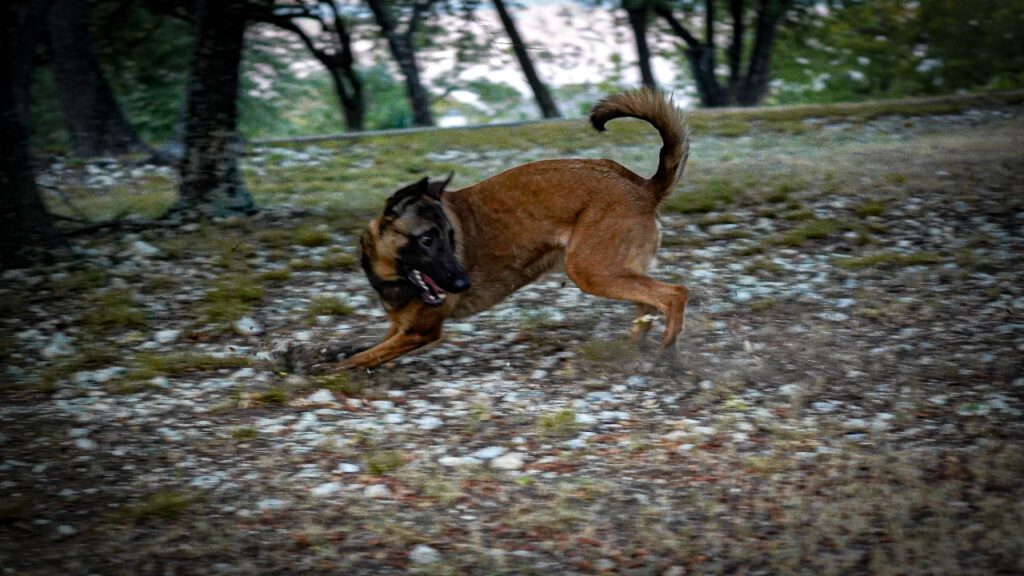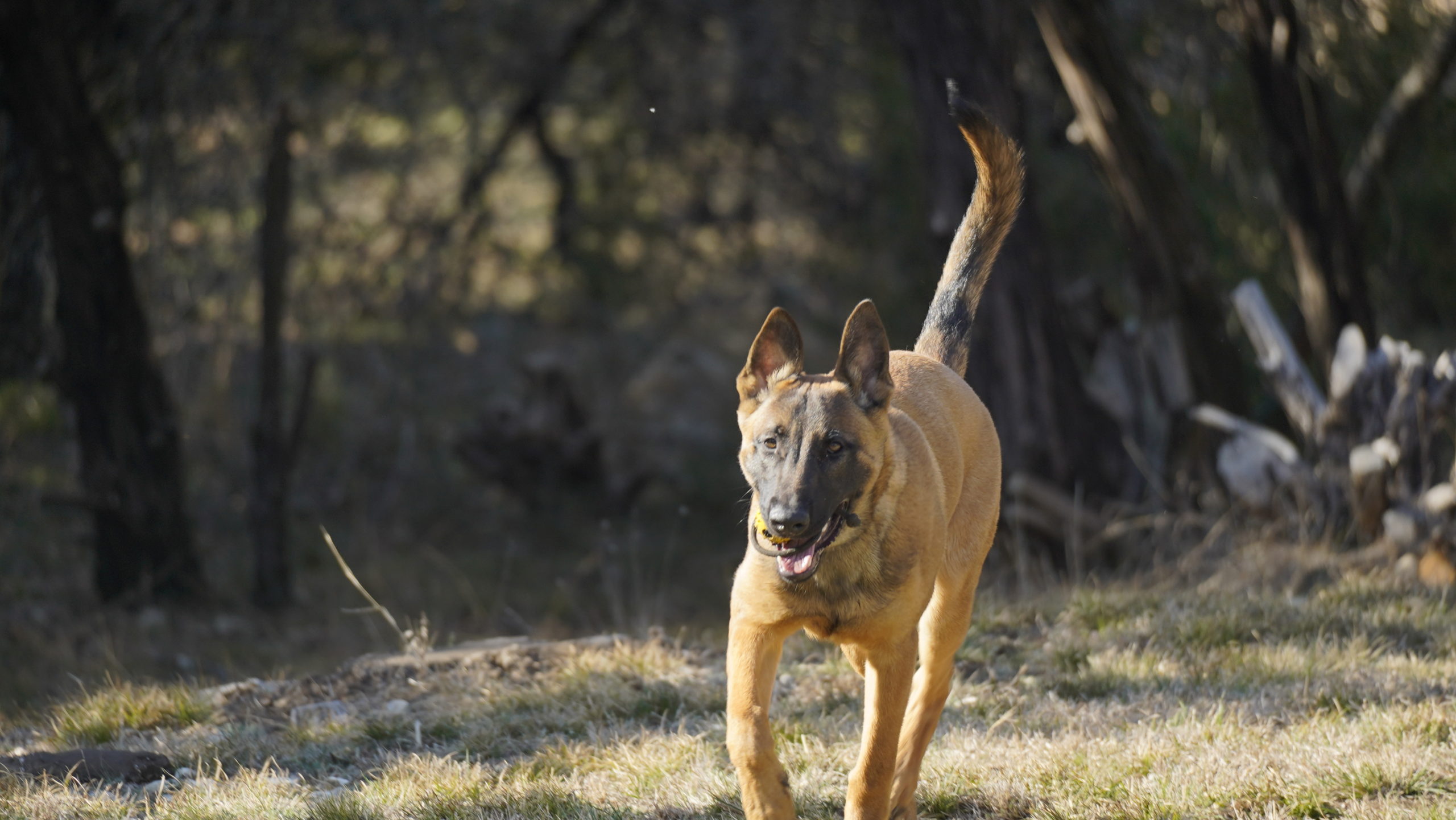Complete Guide to Choosing Protection Dogs

A protection dog is a great way to keep your family and home safe, but not all protection dogs are created equal. There are a lot of things to consider when choosing a protection dog, from the breed of dog to its temperament and training.
In this guide, we will walk you through the process of choosing a protection dog, so you can be confident that you have made the right decision for your needs.
We will start by discussing what to consider before you even begin looking for a protection dog. Then we will look at the different types of protection dogs and the pros and cons of each. Finally, we will give you some tips on how to find a reputable protection dog breeder or trainer.

What to Consider When Choosing a Protection Dog
When choosing a protection dog, several factors should be considered to ensure that the dog is a good fit for your needs and lifestyle. Here are the main things to consider:
Protective Instincts:
A protection dog should have a strong instinct to protect its owner and their property. Look for dogs that naturally exhibit protective behavior, such as barking at strangers or aggressively defending their territory.
Training:
A well-trained protection dog is essential for safety and effectiveness. Look for dogs that have undergone specialized protection dog training with experienced trainers.
Temperament:
A protection dog should be confident, alert, and loyal. The dog should be able to distinguish between friend and foe while remaining obedient to its handler.
Size and Breed:
The size and breed of the dog will depend on your specific needs and preferences. Some larger breeds such as German Shepherds, Rottweilers, and Doberman Pinschers are commonly utilized as protection dogs. However, smaller breeds like Chihuahuas can also be highly effective protectors when trained correctly.

Protective Instincts
When considering protective instincts in a potential protection dog, it’s important to look for specific behaviors. These can include alertness, aggression toward potential threats, and a strong desire to protect their owner and territory. Some breeds, such as German Shepherds and Dobermans, are known for their protective instincts and are commonly used as protection dogs. However, it’s important to note that not all individuals within a breed will have the same level of protective instinct. When evaluating a potential protection dog’s protective instincts, look for the following behaviors:
– Alertness to potential threats
– Aggression or fearlessness toward strangers or potential threats
– Strong desire to protect their owner and territory
– Ability to differentiate between real threats and non-threatening situations
It’s also important to note that while some level of aggression may be desirable in a protection dog, it’s crucial that the dog is well-trained and able to obey commands from their owner. A protection dog that is uncontrollable or aggressive to the point of being dangerous is not a suitable choice.
Training
When it comes to choosing a protection dog, one of the most important factors to consider is their training. Without proper training, a protection dog may become unpredictable and ineffective in real-life scenarios. That’s why it’s essential to choose a protection dog that has undergone extensive and consistent training. Here are some key things to keep in mind when evaluating a protection dog’s training:
1. Training Methods: Look for a protection dog that has been trained using positive reinforcement methods. This method involves rewarding good behavior rather than punishing bad behavior. Punishment can create a negative association with the handler, making the dog less effective in a protection scenario.
2. Specialized Training: Choose a protection dog that has undergone specialized training to fit your specific needs. For example, if you’re looking for a protection dog that can handle a family environment, look for one that has received family protection training. If you’re looking for a dog to protect your business, find one that has undergone security dog training.
3. Ongoing Training: A protection dog’s training should not stop after it has been purchased. Ongoing training is crucial to maintain the dog’s skills and effectiveness. Regular reinforcement training sessions will not only keep the dog at peak performance but will also help maintain the bond between the dog and handler.
Temperament
Temperament is a crucial factor to consider when choosing a protection dog. While a dog’s breed can give you an idea of its general temperament, each dog is an individual with their own personality. Look for a dog with a stable and confident temperament, one who is neither overly aggressive nor too timid. As professional dog trainer Jane Leighty states, “It’s important to find a dog who is quick to recognize a threat and willing to step in, but also knows when to back off.” A protection dog should be able to assess a situation and act accordingly. When meeting potential protection dogs, observe their behavior around different people and in various situations. Are they friendly with strangers but still alert? Do they respond well to commands and show a willingness to learn? These are all indicators of a dog with a strong temperament suitable for protection work.
Additionally, it’s important to note that temperament can also be influenced by training and environment. A well-trained and socialized dog can have a positive impact on their temperament, making them an even better fit for protection work. Keep this in mind when interviewing potential protection dogs and evaluating their suitability for your needs.
Size and Breed
When choosing a protection dog, size and breed are important factors to consider. Different breeds have different physical and temperament characteristics that make them well-suited for certain tasks. For example, larger breeds like German Shepherds or Rottweilers can provide more physical protection, while smaller breeds like Jack Russell Terriers can excel at detecting intruders and sounding the alarm. It is also important to consider the dog’s energy level and exercise needs, as certain breeds may require more activity and stimulation than others. As one expert advises, “You want to choose a breed that fits your lifestyle and can adapt to your environment, whether it be in the city or in the countryside.” It is important to research and consult with professionals to determine which breed and size of protection dog will best fit your needs and lifestyle.
– Size and Breed Considerations
– Physical Characteristics
– Temperament Factors
– Energy and Exercise Requirements
– Choosing a Breed that Fits Your Lifestyle.
Where to Find a Protection Dog
If you’re looking for a protection dog, there are several places you can start your search. Here are some options to consider:
1. Professional Dog Trainers – Consider contacting professional dog trainers who specialize in protection dog training. They can help you find the right dog to fit your specific needs and provide extensive training to ensure your dog is able to protect you and your family when needed.
2. Rescue Dogs – Don’t overlook the possibility of finding a protection dog at a local animal shelter or rescue organization. Many dogs in these shelters have already undergone basic obedience and socialization training, and they may even exhibit protective instincts. It’s important to note that finding the right protection dog at a shelter may take more effort and time compared to other sources.
3. Breeders – While purchasing a dog from a breeder can be an expensive option, it can also allow you to select a specific breed that is known for its protective instincts. Be sure to do your research and choose a reputable breeder who prioritizes the health and wellness of their dogs.
When considering where to find a protection dog, it’s important to remember that each option has its pros and cons. It’s up to you to weigh these factors and decide what will work best for you and your family.

Professional Dog Trainers
One of the best ways to find and train a protection dog is through a professional dog trainer. These trainers will have the knowledge and expertise to train a dog to be an effective protector while also ensuring that the dog is well-behaved and safe around others. When choosing a professional dog trainer, it’s important to consider their credentials and experience in training protection dogs. Look for trainers who have a background in dog behavior and experience working with the specific breed you are interested in.
Make sure to ask for references and reviews from past clients to ensure that the trainer has a track record of success. It’s also important to ask about their training methods, as positive reinforcement techniques are generally considered to be the most effective and humane way to train dogs. Remember, the goal is to find a well-trained protection dog that will be a member of your family and an asset to your security, so take the time to thoroughly vet any potential trainers before entrusting them with your dog’s training.
Rescue Dogs
If you’re considering a rescue dog as a potential protection dog, it’s important to understand that their background may be unknown and they may have been exposed to certain traumas or abuse in the past. As a result, rescue dogs may require additional patience and training to overcome any potential behavioral issues. However, rescue dogs can also make excellent protection dogs as they are known for being fiercely loyal to their new owners.
When interviewing potential rescue protection dogs, observe their behavior closely to assess their temperament and protective instincts. Look for dogs that exhibit confidence, alertness, and a willingness to please their owner. Keep in mind that rescue dogs may require additional training to perfect their skills and obedience.
One advantage of working with a reputable dog rescue organization is that they may have already conducted some training with the dog before it’s ready for adoption. Make sure to work with a rescue organization that specializes in protection dogs, and have the dog professionally evaluated by a trainer before making the final decision to adopt.
Tips for Choosing a Rescue Protection Dog:
– Work with a reputable rescue organization that specializes in protection dogs.
– Observe the dog’s behavior closely to assess its temperament and protective instincts.
– Look for dogs that exhibit confidence, alertness, and a willingness to please their owner.
– Have the dog professionally evaluated by a trainer before making the final decision to adopt.
Breeder
Breeders are a popular choice for those looking to get a protection dog. When choosing a breeder, it is important to do your research and ensure that they are reputable and trustworthy. Look for breeders who have experience breeding protection dogs and who are transparent about their breeding practices. Ask to see the parents of the puppies and their health certificates. A good breeder should be willing to answer any questions you have and provide you with references from past customers.
When it comes to the specific breed that you are interested in, make sure to do your research as each breed has its own characteristics and traits. For instance, German Shepherds are known for their loyalty and trainability, while Rottweilers are known for their strength and courage. It is important to find a breed that fits your lifestyle and needs.
It is also important to consider the temperament of the puppies and their parents. Choose a breeder who socializes their puppies from a young age and exposes them to different environments and stimuli. This will help ensure that the puppies are well-adjusted and less likely to be fearful or aggressive.
Interviewing Potential Protection Dogs
One of the crucial steps in choosing the right protection dog is interviewing potential candidates. It’s essential to conduct interviews with the dog’s current owner, breeder, or trainer to ensure that you get a clear understanding of the dog’s past, personality, and behavior. Here are some key things to consider during the interviewing process:
Observing the Dog’s Behavior:
During the interview, make sure that you observe the dog’s behavior, temperament, and overall personality. Are they shy or outgoing? Are they relaxed or easily agitated? How responsive are they to different commands? Observing these traits can help you determine whether the dog will be a good fit for your needs, lifestyle, and family.
Training:
Ask the current owner or breeder about the dog’s training history and any specific commands the dog has learned so far. Assessing whether the dog’s training is compatible with your protection needs is crucial.
Commands:
It’s recommended to evaluate how well a potential protection dog responds to fundamental commands such as “sit,” “stay,” “come,” “heel,” and “leave it.” This will indicate how well the dog can be trained in further specialized commands used in protection.
After conducting the interview and observing the dog’s behavior, you should have a better idea of whether the dog is a good match for your protection needs. Further evaluation of the dog can be done by testing its response to stimuli and assessing its protection instincts, which will help you make a more informed decision.

Observing the Dog’s Behavior
When choosing a protection dog, it’s important to observe the dog’s behavior to ensure it aligns with your needs and expectations. Here are some key things to consider when observing a potential protection dog:
– Body Language: Pay attention to the dog’s body language. Look for signs of alertness, confidence, and attentiveness.
– Socialization: Observe how the dog interacts with people and other animals. Look for a balanced, confident, and friendly demeanor. It’s important that a protection dog can distinguish between a threat and a non-threat.
– Reactivity: Assess the dog’s reaction to different stimuli, such as loud noises or sudden movements. A good protection dog should remain calm and focused in stressful situations.
– Aggression: Look for signs of aggression, such as growling, snapping, or biting. It’s important that a protection dog is “handler-focused” and can be controlled in all situations.
Training
Training is one of the most crucial elements to consider when choosing a protection dog. A protection dog should have actual protective instincts and know how to channel them. However, that doesn’t mean that they should be aggressive or out of control. As renowned dog trainer Cesar Millan once said, “For a dog to be well-mannered, it requires more than natural instincts. They need to be trained.” A well-trained dog will know how to protect its family at the right time and in the right way. The training process should start with obedience and socialization training early in the dog’s life, followed by specialized protection training. You should always choose a dog that has undergone training and can demonstrate the necessary skills for protection. You could ask for proof of the protection dog’s training or ask the trainer or previous owner to demonstrate the dog’s protective capabilities.
It’s also worth noting that training is an ongoing process, and it’s essential to keep up with it to maintain the dog’s protection skills at their best. As a protection dog owner, you should not only prioritize your dog’s physical needs but also its mental well-being. You should interact and play with your dog daily, and invest time in training and grooming to ensure they remain well-mannered, healthy, and mentally balanced.
Commands
Once you have found a potential protection dog, it is important to evaluate their level of obedience and responsiveness to commands. A well-trained protection dog should be able to follow basic commands such as “sit,” “stay,” “come,” and “heel” without hesitation. In addition to basic obedience training, specialized protection training should also be considered. According to experienced dog trainer John Wickham, “Protection training is extremely important for a protection dog. It teaches the dog to respond to a threat in a controlled and effective manner.” It is important to ensure that the training is humane and effective, and that the dog is not in any way harmed or traumatized during training. Evaluating the dog’s responsiveness to commands and level of specialized training can help ensure that you choose the best protection dog for your needs.
Testing Your Potential Protection Dog
Once you have a potential protection dog in mind, it’s important to thoroughly test their skills and instincts before making a final decision. Testing your potential protection dog involves evaluating its response to stimuli and assessing its protective instincts. Here are some key steps to follow during the testing process:
1. Evaluating the Dog’s Response to Stimuli:
Introduce your dog to various stimuli, such as loud noises, unfamiliar people, and sudden movements. Observe their demeanor and look for signs of aggression and obedience.
2. Testing the Dog’s Protection Instincts:
To test your dog’s protective instincts, have a trusted helper don a padded bite sleeve and simulate an attack. Observe your dog’s reaction and evaluate their ability to apprehend an adversary. Make sure to use appropriate protective gear and safety protocols during the testing process.
3. Continuing Training:
It’s essential to continue training and reinforcing your protection dog’s skills and abilities. Consistency is key, and regular training sessions will help your dog maintain their focus and discipline.



Evaluating the Dog’s Response to Stimuli
Evaluating a potential protection dog’s response to stimuli is an important part of the selection process. It’s important to assess how the dog reacts to different situations and objects. One way to do this is to expose the dog to various stimuli, such as loud noises, sudden movements, and unfamiliar people.
Here are a few things to keep in mind when evaluating a dog’s response to stimuli:
– Body language: Observe the dog’s body language and see if it appears confident, curious, or fearful. A confident dog will typically have an alert and curious expression, while a fearful dog may cower or try to hide.
– Aggression: Look for signs of aggression, such as growling, barking, or lunging. A protection dog should have a strong protective instinct, but this should be channeled through appropriate training and should not be directed towards innocent people or animals.
– Adaptability: Notice how quickly the dog adjusts to new stimuli and if they can adapt to different environments and situations. This is important as a protection dog may need to work in a variety of settings and respond to unfamiliar people.
It’s also important to remember that training can play a significant role in a dog’s response to stimuli. A well-trained protection dog should be able to handle a variety of situations and stimuli in a calm and controlled manner.
Testing the Dog’s Protection Instincts
When it comes to selecting a protection dog, testing the dog’s protection instincts is a crucial step. One effective way to test these instincts is through the use of decoys or mock attackers. During this test, a decoy will be instructed to approach the dog in a threatening manner and see how the dog responds. A dog with strong protection instincts will quickly recognize the threat and act accordingly, either by barking, growling, or even biting the decoy. However, it’s important to note that this test should only be done under the supervision of a professional trainer and in a controlled environment.
Another test that can be done is the bite test, which evaluates the dog’s bite strength and technique. The trainer or handler can evaluate the dog’s bite by using a specialized device that measures the amount of pressure the dog exerts. A dog with a strong bite and good technique is more likely to deter or even take down a potential attacker.
Aftercare for Protection Dogs
Once you have chosen your protection dog and have brought them home, it is important to understand the ongoing care they will need to maintain their training and overall health. Here are some key considerations for aftercare:
1. Ongoing Training: Protection dogs require regular training to maintain their skills and abilities. Continuing to work with your dog on obedience, protection, and socialization will help them stay sharp and alert.
2. Exercise: Protection dogs also need regular exercise to stay healthy and happy. This can include walks, runs, or other forms of activity that allow them to expend energy and stimulate their minds.
3. Grooming: Regular grooming is important for all dogs, including protection dogs. This includes brushing their coat, cleaning their ears and teeth regularly, and trimming their nails as needed.
Overall, taking care of a protection dog requires commitment and dedication, but in return, you will have a loyal and trustworthy companion who will protect you and your family.
Ongoing Training
Once you have chosen and brought home your protection dog, ongoing training is essential to maintain their skills and ensure they are always ready to protect you and your family. Protection dogs require ongoing training to stay disciplined, alert, and attuned to your needs. You should work with a professional dog trainer who specializes in protection dog training to help you design an appropriate training program.
A good training program for protection dogs will include regular obedience training, socialization, and behavior modification. Protection dogs should receive physical and mental exercises every day to keep them in good shape and prevent boredom.
Additionally, you should continue to work on your dog’s protective instincts by training them to respond to specific commands and stimuli. This could include situations like strangers at your door, sudden loud noises, or unexpected movements. Regular training and refreshers on these skills will ensure your protection dog is always ready and prepared to keep you safe.
Exercise
Exercise is essential for the physical and mental well-being of protection dogs. Proper exercise can help to keep them healthy and happy while also helping to build and maintain their muscle mass. To keep your protection dog in top shape, you should schedule daily exercise sessions and vary the types of activities to keep them engaged and stimulated. This could include running or jogging alongside your dog, playing fetch or tug-of-war, hiking, or swimming. It’s important to ensure that your protection dog has access to both physical and mental stimulation to meet their exercise needs. As a general rule, adult dogs should get at least 30 minutes of moderate-to-intense exercise per day, while puppies require more frequent and shorter exercise sessions to avoid overexertion.
Grooming
Grooming is an important aspect of owning a protection dog. It not only keeps them looking good but also contributes to their overall health and well-being. Depending on the breed and coat type, some protection dogs require more grooming than others. Here are some important grooming considerations to keep in mind:
1. Brushing: Regular brushing is essential to maintain a healthy coat and prevent matting or tangling. Some breeds, such as German Shepherds and Belgian Malinois, have double coats and shed heavily. Regular brushing can help reduce shedding and keep their coat healthy.
2. Bathing: Protection dogs should be bathed as needed. However, excessive bathing can strip their coat of natural oils and cause skin irritation. Use a mild shampoo specifically designed for dogs, and rinse thoroughly to avoid any residue.
3. Nail trimming: Protection dogs should have their nails trimmed regularly to prevent them from getting too long and potentially causing discomfort or even injury. If you’re not familiar with the process, it’s best to have a professional groomer or veterinarian handle this task.
4. Teeth cleaning: Regular teeth cleaning can help prevent dental problems such as tartar buildup, gum disease, and bad breath. You can use a dog-specific toothbrush and toothpaste, or provide dental chews that can help clean teeth.
5. Ear cleaning: Regular ear cleaning can help prevent infections and irritation. Use a gentle cleanser specifically designed for dogs, and be sure to dry their ears thoroughly after cleaning to avoid moisture buildup.
By following a regular grooming routine, you can help ensure that your protection dog stays healthy, comfortable, and looking their best.


